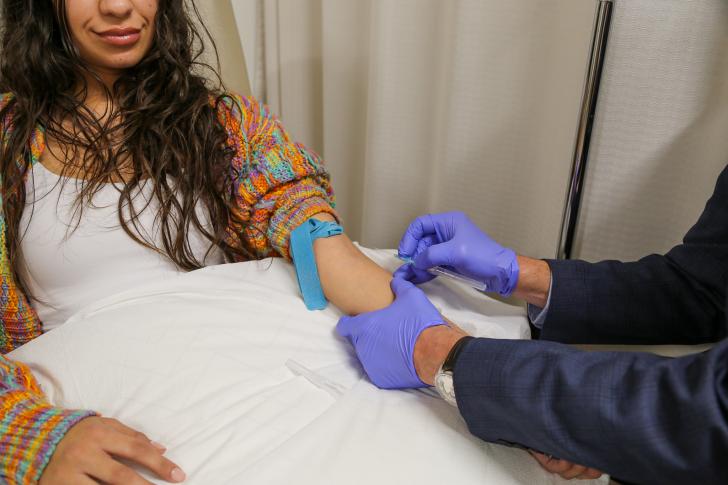9 Tips to Fight Childhood Obesity

Published
We all know that childhood obesity is a growing problem in this country and other resource-rich countries around the world but how prevalent is this issue and what can we do about it as parents, family members and healthcare providers? Let’s first define the issue. Obesity refers to an excess of body fat but is generally measured by BMI (body mass index) in the clinical setting. This is a calculation that creates a relationship between height and weight. Although it may be inaccurate for some body types, it is useful if used correctly. Currently, approximately one third of all children and teens in the United States can be classified as either overweight or obese [1] 25 percent of preschool-aged children (which includes 2-5 year olds) are considered overweight or obese and 37.4 percent of teens (ages 12-19 years of age) are in this category as well. Most of these children will still be obese into adulthood and therefore we support the idea of early intervention. [2]
So what can we do to help this issue?
- Parents: Model to your children how you want them to live. If you want your children to be more active, this will be much more effective if you play and become active with them. Modeling healthy habits is key. Studies show that childhood obesity is more likely to persist if there is at least one obese parent.
- Playtime! Children (and adults) are meant to have active lifestyles. Though many aspects of our culture demand that we are sedentary, there are ways to mitigate this. Taking breaks from school or work to walk or play is healthy for mind and body. Having a standing desk or bozu ball to sit on for children and adults helps build important structural muscles in the body and maintain good posture.
- Decrease the sugar! Sounds obvious, right? Sugar can be hidden in all sorts of forms, even in seemingly healthy products from health food stores. Start training yourself and your children to look at the sugar content of packaged foods and make an informed decision before purchasing an item. Consider cutting out all fruit juices or any other liquid that contains sugar. [3]
- Consider sitting down for prepared meals with your family and request your children be present. Studies show that diminishing family presence at meals may actually be an environmental factor contributing to this epidemic.
- Push for school based programs that increase physical activity, provide education on nutrition and provide healthy foods served at school. The American Academy of Pediatrics strongly suggests that schools cut down on any access to sugar-sweetened beverages including those used for rehydration during sports. [4]
- Cut down on screen time! The American Pediatric Society recommends less than two hours a day of total screen time for children. This seems like a lot but can add up quickly between television watching, computer use and school time. Opt for fewer hours in front of the screen and more hours playing on sports teams or being active outside. Studies show that the amount of time a child spends watching TV or the prevalence of TV watching in the bedroom directly correlates to the rates of obesity in that cohort. Watching TV becomes a replacement for physical activity, depresses metabolic rates and often adversely effects diet and sleep. [5]
- Consider buying your children active toys over computer and video games.
- Play outside every day! Purchase your child a good set of raingear and outdoor wear so clothing doesn’t hold them back on a rainy day.
- Sleep! Studies show that children with early bedtimes, even after adjusting for confounding variables experienced lower rates of obesity. Shorter sleep times are associated with increased insulin resistance and confused hunger signals, leading to increased food seeking. [6] [7]
In conclusion, both childhood and adult obesity are key and important issues to be addressed over the next few decades. Obesity in our children puts them at hugely increased risk for diabetes, high cholesterol and cardiovascular disease later on in life. Let’s all do our part for this highly preventable and treatable disease so our children can enjoy long, healthy and quality lives.
[1] Skinner AC, Perrin EM, Skelton JA. Prevlanece of Obesity and Severe Obesity in uS Children, 1999-2004. Obesity. 2016; 24 (5): 1116.
[2] Ogden CL, Carroll MD, Lawman HG, Fryar CD, Kruszon-Moran D, Kit BK, Flegal KM. Trends in Obesity Prevalence Among Children and Adolescents in the United States 1988-1994 Through 2013-2014. JAMA. 2016 June; 315 (21): 2292-9.
[4] Pediatric Obesity. In: Pediatric Nutrition Handbook, 6th ed, Kleinman R (Ed), American Academy of Pediatrics, Elk Grove Village, IL 2009. p.733.
Dr. Lydia Peters is a first-year naturopathic resident at Bastyr Center for Natural Health, where she sees patients in both Team Care and Resident care. Her clinical interests include pediatric and geriatric medicine.


